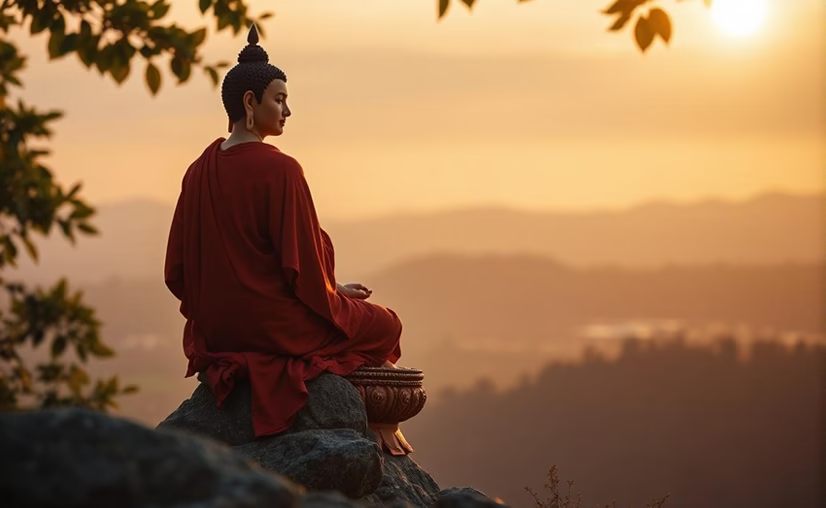Buddhist Culture: A Legacy of Peace and Compassion

Buddhist Culture: A Legacy of Peace and Compassion
The foundations of Buddhist culture in peace and compassion have created influences in art and philosophy and spiritual practices worldwide.
The teachings of Gautama Buddha from the 5th century BCE created Buddhist culture which stands as a powerful legacy centered on peace and compassion that deeply affected global traditions. Every life aspect receives wisdom through Buddhist culture’s range from detailed stupas to meditative practices. My extensive study of Buddhist heritage reveals how this culture promotes harmony which leaves lasting impressions on art forms, philosophical thought and everyday life.
The Foundations of Buddhist Culture
The Four Noble Truths along with the Eightfold Path and compassion establish the fundamental structure of Buddhist culture. These teachings emerged from India before reaching wider audiences through both the Pali Canon and Mahayana sutras to develop spiritual and ethical standards. According to scholar Peter Harvey Buddhist culture gains universal appeal through its focus on non-violence (ahimsa) and mindfulness which makes it adaptable to different societies.
Core Elements
- Compassion (Karuna): Promotes empathy and kindness toward all beings.
- Mindfulness: The Satipatthana Sutta serves as the foundation for cultivating mindfulness awareness.
- Impermanence (Anicca): Encourages detachment from material pursuits.
Art and Architecture in Buddhist Culture
Buddhist artistic heritage emerges through its ancient carvings at the Sanchi Stupa dating to 3rd century BCE and the peaceful Buddha sculptures from Gandhara. UNESCO recognizes the Ajanta cave paintings as masterpieces that unite sacred themes with artistic beauty. According to a study published in the Journal of Indian Art History in 2020 researchers estimated that more than 15,000 Buddhist artworks from various periods still exist today as evidence of both spiritual dedication and artistic skill.
Artistic Expressions
- Stupas: Sanchi and Borobudur symbolize enlightenment.
- Sculptures: Mathura’s Buddha icons humanize spiritual ideals.
- Mandala Art: Tibetan designs aid meditation and reflection.
Learn more about Ancient Buddhist Legacy through our article.
Philosophy and Literature
The teachings of Buddhist philosophy found in works such as the Dhammapada and Heart Sutra focus on wisdom together with ethical conduct. The Jataka Tales integrate moral teachings through captivating stories which have affected worldwide literature. Research published in the 2019 Journal of Buddhist Ethics showcases how these elements encourage cross-cultural understanding and empathy.
Literary Contributions
- Dhammapada: The Dhammapada provides clear teachings as demonstrated by the advice “Conquer anger with love.”
- Buddhacarita: Ashvaghosha’s epic narrates Buddha’s life poetically.
- Sutra Texts: Mahayana sutras inspire devotion and insight.
Access translations at Ancient Buddhist Texts.
Practices and Festivals
Buddhist culture remains vibrant through meditation practices and celebrations such as Vesak which honors Buddha’s birth, enlightenment, and passing. The ancient text-based Vipassana meditation practice enhances mental clarity according to findings published in Mindfulness journal in 2021. These traditions foster community and inner peace.
Cultural Practices
- Meditation: Techniques like metta (loving-kindness) promote compassion.
- Festivals: Vesak unites devotees in prayer and charity.
- Pilgrimage: Sites like Bodh Gaya strengthen spiritual bonds.
Discover more about the Essence of Buddhist Sutras in our dedicated post.
Why Buddhist Culture Endures
The principles of peace and compassion from Buddhist culture influence present-day practices including mindfulness therapies and dialogue between different faith traditions. A 2022 Heritage Studies report finds that Buddhist art and sites including Nalanda enhance cultural tourism. The religion maintains significant worldwide influence with its 520 million followers according to Pew Research Center in 2020.
Ways to Engage
- Practice Mindfulness: Meditate using Metta Sutta guidance.
- Visit Sites: Explore Sanchi or Lumbini for inspiration.
- Study Texts: Read the Dhammapada at Access to Insight.
- Support Heritage: Advocate for preservation of Buddhist monuments.
FAQ: Buddhist Culture
- Q: What defines Buddhist culture?
- A: Buddhist culture reflects the principles of peace and compassion demonstrated through its artistic expressions and philosophical teachings alongside meditation practices and festivals based on Buddha’s doctrines.
- Q: How has Buddhist art shaped global culture?
- A: Stupas and sculptures along with mandalas found at Sanchi serve as sources of inspiration for spiritual and artistic traditions which merge beauty with profound wisdom.
- Q: How do Buddhist texts contribute to its legacy?
- A: The Dhammapada and Jataka Tales deliver lessons in compassion and ethics which have shaped global literary traditions and ethical storytelling.
- Q: Why does Buddhist culture maintain its relevance today?
- A: The focus of Buddhist teachings on mindfulness and peace shapes mental health practices while promoting harmony throughout diverse global communities.
- Q: Where can I explore Buddhist cultural heritage?
- A: You can experience Buddhist cultural heritage by visiting UNESCO sites or accessing resources at Ancient Buddhist Texts alongside Buddhist Digital Resource Center.
Conclusion: Embracing Buddhist Culture’s Legacy
The lasting principles of peace and compassion from Buddhist culture remain influential in artistic expression and philosophical study and spiritual rituals. The teachings of Buddhism guide us toward mindful living and peaceful coexistence. Join our discussion about Buddhist culture in the comments or subscribe to receive more knowledge about spiritual traditions!